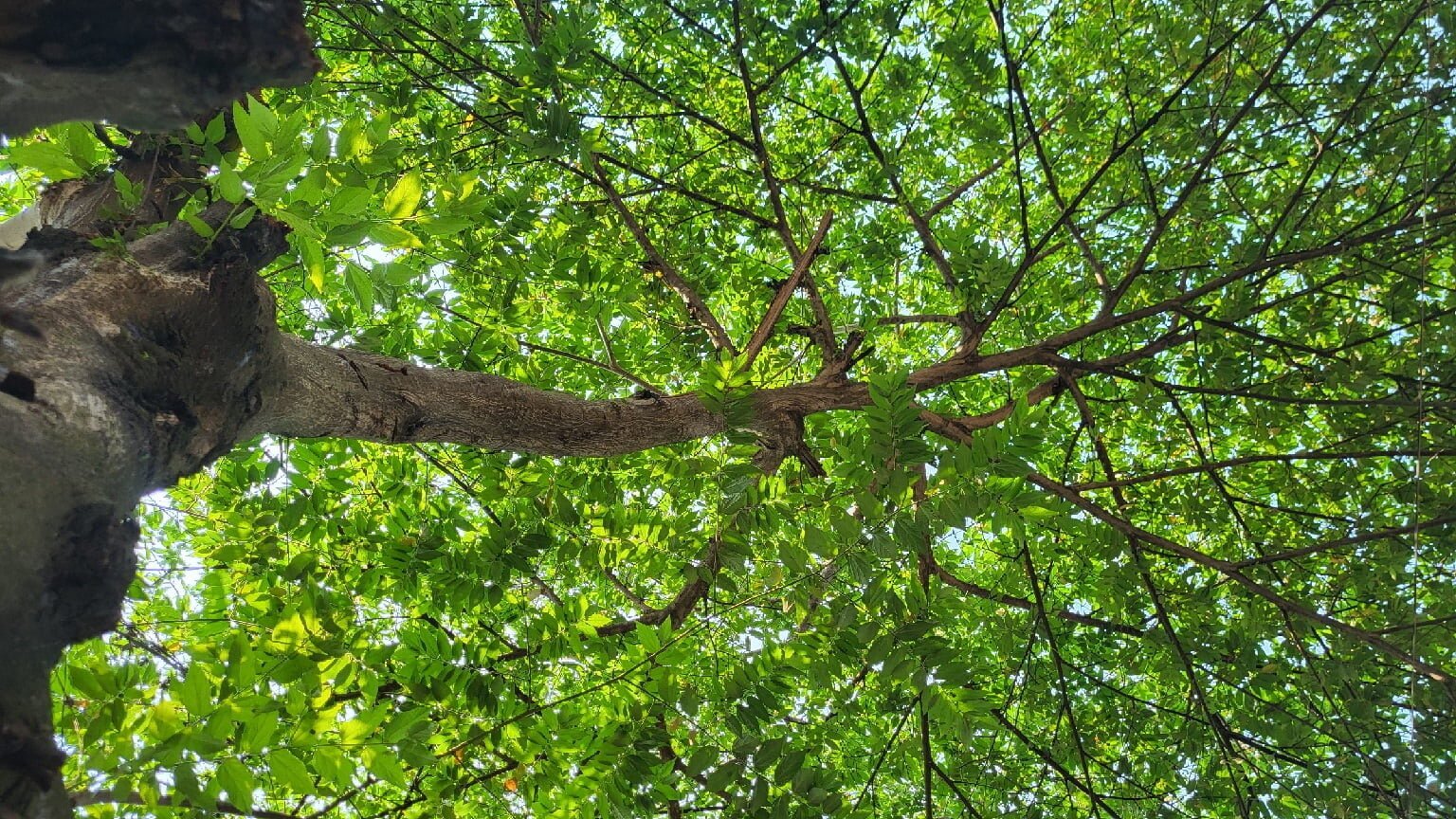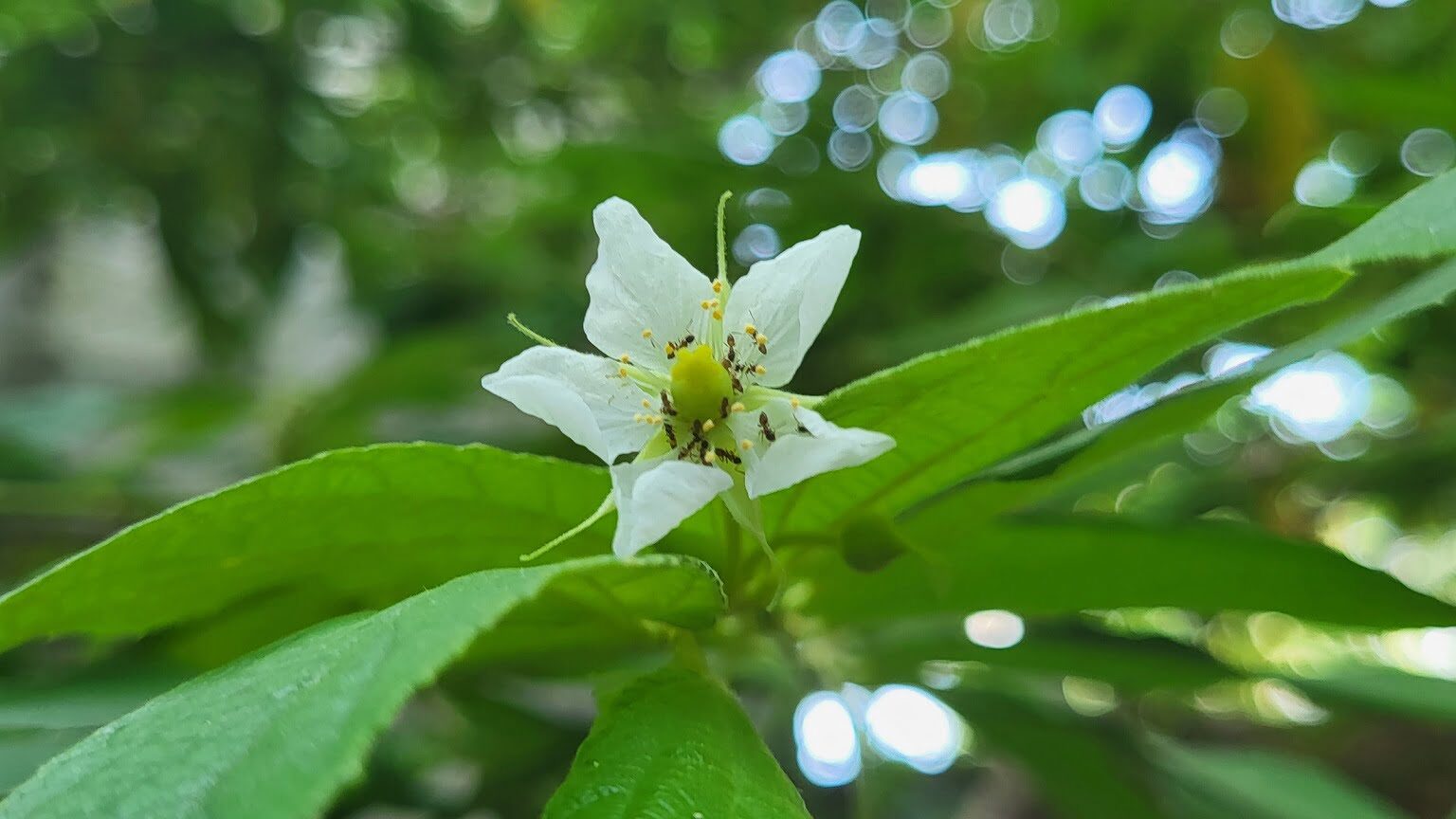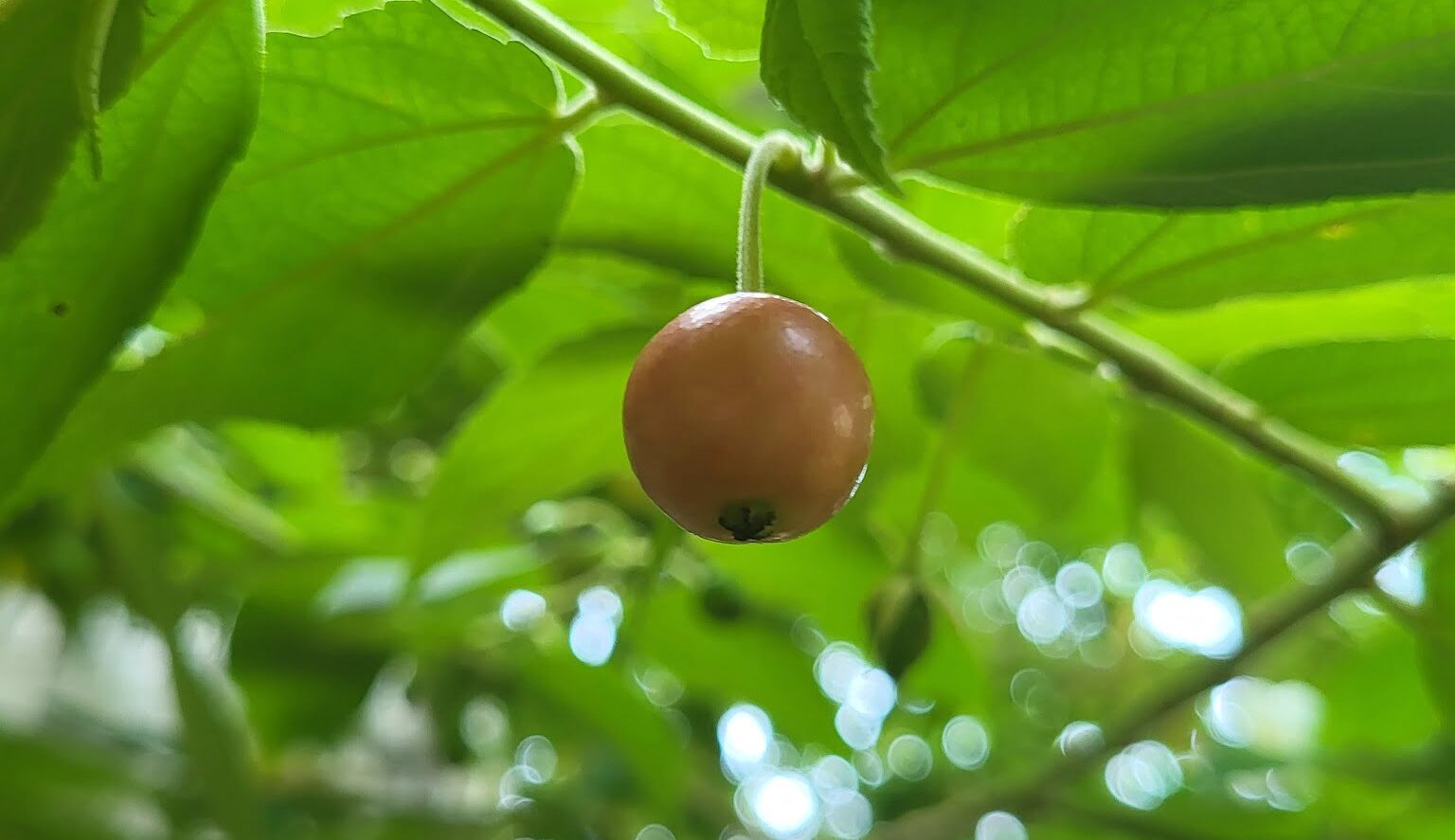Have you ever gazed at that intriguing tree just outside your house, adorned with charming white flowers and round fruits that bear a striking resemblance to cherries or berries?
Not only are these fruits pleasing to the eye, but they also possess an irresistible combination of sweetness and a hint of tartness that makes them simply delightful to taste.
In this article, we embark on a journey to uncover the wonders of the Aratiles tree and delve into its benefits, characteristics, historical significance and fascinating facts. Prepare to be amazed by the remarkable qualities of this extraordinary tree!
What is Aratiles Tree?
The Aratiles tree, also known as Sarisa and scientifically identified as Muntingia calabura, is a captivating tree species that is native to the tropical regions of America. It is not only admired for its beauty and rapid growth but also provides a multitude of benefits to both humans and the environment through its fruits.
Aratiles fruits have a sweet and slightly tart flavor, making them a delectable treat. The flesh is soft and juicy, encasing small seeds. The fruits are edible and can be consumed fresh, used in various culinary preparations, or processed into jams, jellies, and beverages.
Aratiles Fruit Benefits
The Aratiles fruit, also known as Jamaican cherry or Singapore cherry, is a tropical treasure that offers a myriad of health benefits. Here are some notable benefits of the Sarisa fruit:
A. Rich Nutritional Profile
Aratiles tree fruits are packed with essential nutrients, making them a valuable addition to a healthy diet. These small, round fruits are a rich source of vitamins, minerals, and antioxidants.
They are notably high in vitamin C, providing more than 100% of the recommended daily intake per serving. Vitamin C is a potent antioxidant that boosts the immune system, promotes collagen synthesis, and helps protect against oxidative stress.
Moreover, Aratiles fruits contain significant amounts of vitamin A, which supports good vision, healthy skin, and proper immune function.
They also offer dietary fiber, potassium, calcium, and iron, contributing to overall well-being.
B. Powerful Antioxidant Properties
Aratiles fruits are known for their impressive antioxidant properties.
Antioxidants play a crucial role in neutralizing harmful free radicals in the body, thereby reducing the risk of chronic diseases, such as heart disease and certain types of cancer.
The abundance of antioxidants in Aratiles fruits helps combat oxidative stress, which can lead to cellular damage and age-related ailments.
C. Boosts Immune System
Due to its high vitamin C content, Aratiles plays a vital role in strengthening the immune system.
Vitamin C supports the production and function of white blood cells, which are essential for fighting off infections and illnesses.
Regular consumption of Aratiles fruits may help reduce the duration and severity of common colds, flu, and other respiratory infections.
D. Promotes Digestive Health
Aratiles tree fruits are a good source of dietary fiber, which aids in promoting healthy digestion.
Fiber adds bulk to the stool, facilitating regular bowel movements and preventing constipation.
A diet rich in fiber can also help regulate cholesterol levels and promote a healthy gut microbiome, which is crucial for overall digestive well-being.
E. Supports Heart Health
Aratiles fruits may contribute to a healthy heart.
The presence of antioxidants, potassium, and dietary fiber in these fruits can help maintain optimal cardiovascular function.
Antioxidants protect the heart from oxidative damage, while potassium helps regulate blood pressure. The fiber content helps reduce LDL (bad) cholesterol levels, lowering the risk of heart disease and stroke.
F. Anti-inflammatory Properties
Aratiles fruits have been traditionally used in herbal medicine due to their anti-inflammatory properties.
The presence of bioactive compounds, such as flavonoids and phenolic acids, can help alleviate inflammation in the body.
Chronic inflammation is associated with various health conditions, including arthritis, diabetes, and cardiovascular diseases.
Including Aratiles fruits in the diet may help reduce inflammation and promote overall well-being.
Characteristics of Aratiles Tree
The Aratiles tree possesses a range of distinctive characteristics that make it a fascinating species. Here are some notable traits and features of the Aratiles tree:

A. Size and Growth
The Aratiles tree typically grows to a height of 10 to 15 meters (33 to 49 feet) with a spreading canopy. It exhibits rapid growth, allowing it to establish itself quickly in various environments.
B. Leaves
The tree’s leaves are simple, opposite, and ovate in shape, measuring around 5 to 10 centimeters (2 to 4 inches) in length. They have a glossy texture and vibrant green color, adding to the tree’s aesthetic appeal.
C. Bark
The bark of the Aratiles tree is smooth when young, showcasing a reddish-brown hue. As the tree ages, the bark becomes rougher and develops vertical cracks.
D. Flowers
The Aratiles tree produces small, delicate, and white flowers with five petals. These fragrant blossoms are often present in abundance, adorning the tree’s branches and attracting pollinators such as bees and butterflies.
E. Fruits
One of the most distinctive features of the Aratiles tree is its fruits. The round berries, resembling cherries or small berries, measure around 1 to 2 centimeters (0.4 to 0.8 inches) in diameter.
They typically have a green color when unripe and turn bright red or orange when fully mature. The fruits are visually appealing and often occur in clusters, covering the branches of the tree.
History of Aratiles Tree
The history of the Aratiles tree (Muntingia calabura) is intertwined with its origins in the tropical regions of the Americas and its subsequent spread across different parts of the world. Here is a brief overview of the historical aspects of the Aratiles tree:
A. Native Origins
The Aratiles tree is native to the tropical regions of the Americas, including Central America, South America, and the Caribbean.
It has been a part of these ecosystems for centuries, contributing to the biodiversity and natural landscapes of the regions.
B. Indigenous Uses
Indigenous communities in the Americas have long appreciated the Aratiles tree for its fruits and other practical uses.
The edible fruits provided a source of nourishment, while other parts of the tree, such as the leaves and bark, were utilized for various medicinal purposes.
C. Cultural Significance in the Philippines
The Aratiles tree holds particular cultural significance in the Philippines, where it has become an integral part of the local traditions and culinary practices. It is believed to have been introduced to the Philippines during the Spanish colonial period.
Over time, the tree became embedded in Filipino culture, with its fruits known as “Aratilis” or “Sarisa” occupying a special place in the hearts and taste buds of Filipinos.
Songs, folklore, and childhood memories are often associated with this tree, deepening its cultural resonance.
D. Global Distribution
Beyond its native range, the Aratiles tree has been introduced to other parts of the world due to its appealing fruits, ornamental value, and adaptability.
It can now be found in various tropical and subtropical regions, including Southeast Asia, parts of Africa, and Pacific islands.
E. Commercial Cultivation
In recent years, there has been growing interest in commercial cultivation of the Aratiles tree due to its desirable characteristics.
Its rapid growth, ability to tolerate different soil conditions, and attractive fruits make it a promising candidate for agroforestry and landscaping projects in suitable climates.
F. Medicinal Research
The medicinal properties of the Aratiles tree have garnered attention in recent years, leading to scientific research on its potential health benefits.
Studies have focused on the antibacterial, anti-inflammatory, and antioxidant properties of various parts of the tree, including its fruits, leaves, and bark.
The history of the Aratiles tree is rich and multifaceted, encompassing its indigenous uses, cultural significance, global distribution, and emerging research.
As the tree continues to enchant with its beauty and offer valuable benefits, its story continues to evolve alongside the changing landscapes and cultures it touches.
Fascinating Facts About the Aratiles Tree
The Aratiles tree, with its captivating charm and rich cultural heritage, holds a world of fascinating facts waiting to be discovered.
From its rapid growth and abundance of delectable fruits to its diverse names across different regions, the Aratiles tree never fails to captivate.

Join us as we delve into the enchanting world of the Aratiles tree and uncover its fascinating facts that will leave you in awe.
A. Natural Habitat
The Aratiles tree is native to the tropical regions of the Americas, including the Caribbean, Central America, and northern South America. It has also been introduced to other parts of the world, such as Southeast Asia and the Pacific Islands.
B. Rapid Growth
The Aratiles tree is renowned for its fast growth rate. It can reach heights of up to 20 to 30 feet (6 to 9 meters) within just a few years. This rapid growth makes it a popular choice for reforestation and landscaping projects.
C. Multiple Names
The Aratiles tree is known by various names across different regions. In Jamaica, it is commonly referred to as “Jamaican cherry” or “West Indian cherry.” In Singapore, it is known as “Singapore cherry.” Other regional names include “Bajelly tree” in Australia and “Manzanita” in parts of South America and in the Philippines its fruits known as “Aratilis” or “Sarisa”.
D. Short Lifespan
Despite its rapid growth, the Aratiles tree has a relatively short lifespan compared to other tree species. On average, it lives for around 15 to 20 years. However, its abundant fruit production and ability to regenerate quickly compensate for its shorter lifespan.
E. Edible Delicacy
The fruits of the Aratiles tree are not only visually appealing but also deliciously sweet and tangy. They have a unique flavor that is often described as a combination of cherry, strawberry, and guava. The fruits are typically consumed fresh, but they can also be used in jams, jellies, desserts, and beverages.
F. Cultural Significance
In many tropical regions where the Aratiles tree is found, the fruits hold cultural significance. They are often used in traditional medicine, culinary traditions, and festive celebrations. The tree itself is sometimes used as a shade tree due to its dense foliage.
G. Medicinal Uses
Various parts of the Aratiles tree, including the leaves, bark, and fruits, have been traditionally used in herbal medicine. The leaves are believed to possess anti-inflammatory and antibacterial properties, while the bark is used to treat gastrointestinal disorders. The fruits are often consumed for their nutritional and medicinal benefits.
H. Attracts Wildlife
The Aratiles tree is highly attractive to birds, particularly in the Caribbean. The ripe fruits are a favorite food source for many bird species, contributing to seed dispersal and promoting the tree’s growth in natural ecosystems.
I. Ornamental Value
Beyond its practical uses and health benefits, the Aratiles tree also has ornamental value. Its vibrant red fruits and glossy green foliage make it an eye-catching addition to gardens, parks, and landscapes, enhancing their visual appeal.
In conclusion, the Aratiles tree is not only a bearer of delicious and nutritious fruits but also a fascinating tree with its rapid growth, cultural significance, and various practical uses.
Its ability to thrive in tropical regions and provide multiple benefits to both humans and wildlife makes it a truly remarkable species.
Final Word
The Aratiles tree is a captivating tree species native to the tropical regions of the Americas. It is admired for its rapid growth, beauty, and most notably, its delectable fruits.
The Aratiles fruits offer a range of benefits, including a rich nutritional profile, powerful antioxidant properties, immune system support, promotion of digestive health, and contribution to heart health.
The tree itself possesses distinctive characteristics such as its size, leaves, bark, flowers, and visually appealing fruits.
Also Read: Cactus and Succulent Care Tips Guide for Beginners
Well, what do you think about the article?
Did you enjoy reading “Aratiles Tree Benefits And Fascinating Facts About It“? If so, please comment down below. We would love to hear your thoughts about these awesome benefits and facts.
To see more content like this check the gardening section of Money For My Beer.

Chief Editor and Website Owner.
Hey, I’m Ryan, a software guy and the owner of Money For My Beer. I’m the one making sure all our posts on the site are awesome.
I usually handle tech stuff that might not be super interesting to everyone, like programming enterprise software, apps, games, and websites. Cool stuff, right? I also help clients with SEO and sometimes create games.

